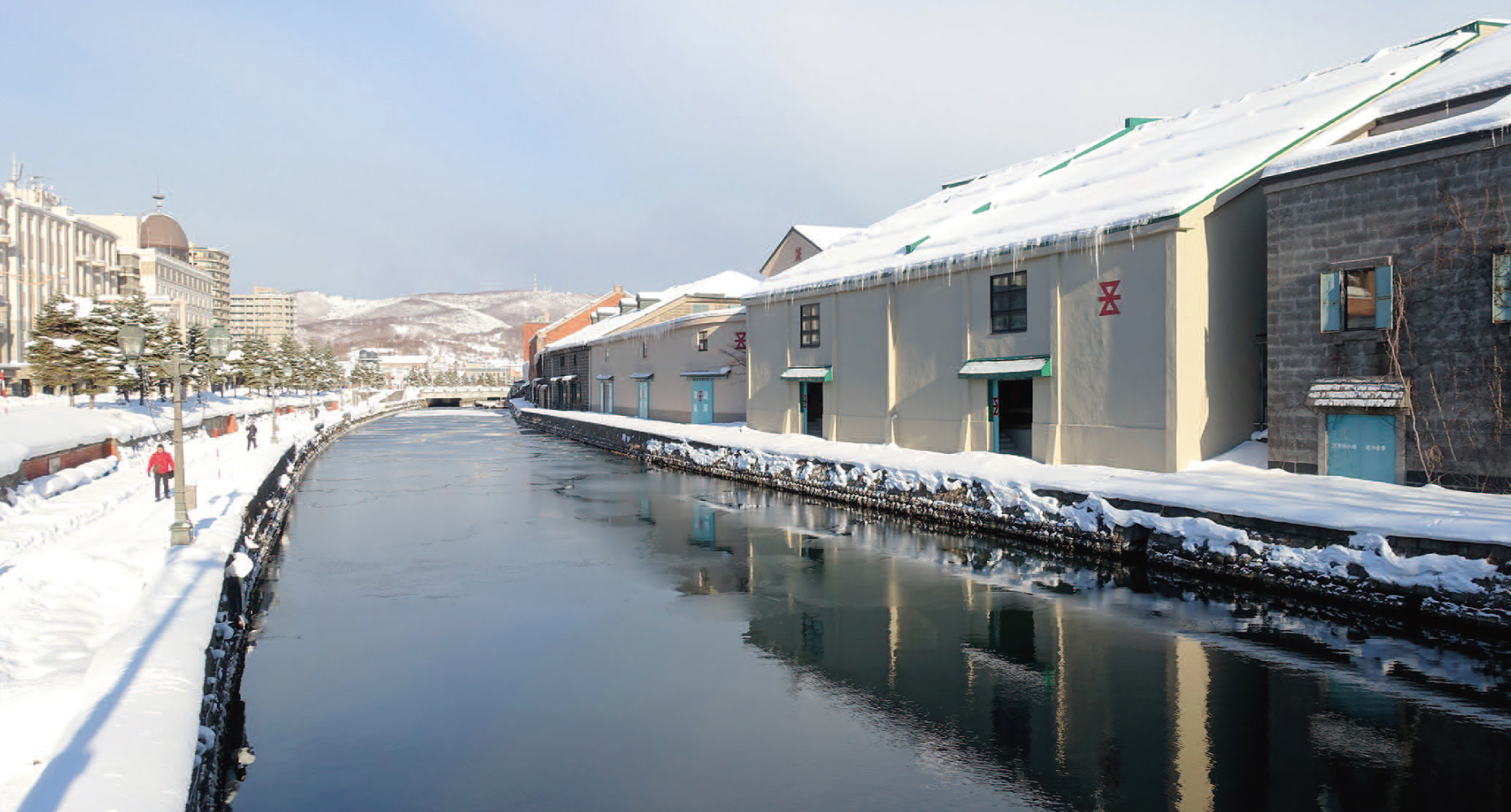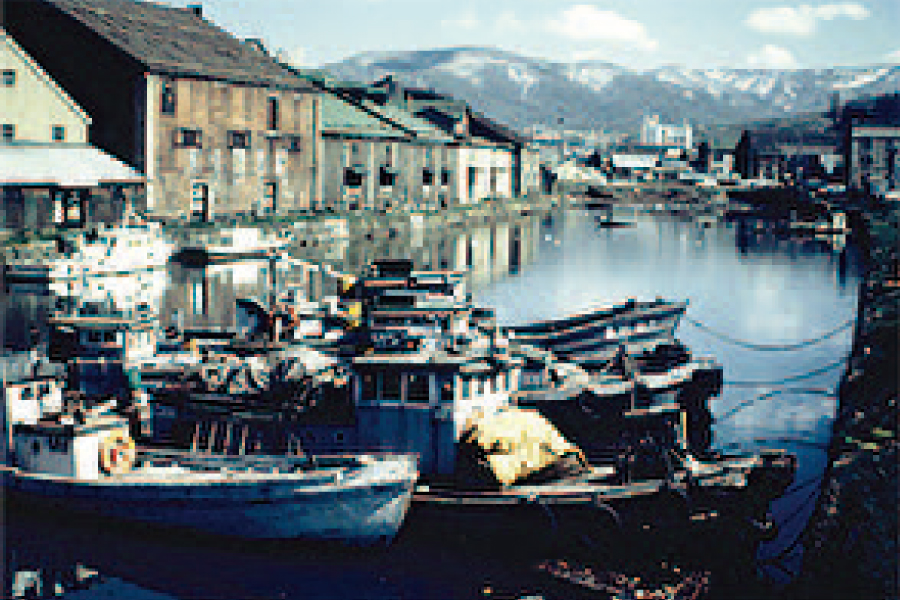
Shibusawa Warehouse (the two white buildings on the right)

Mid-Showa Period, Shinoda Warehouse
(the brick warehouse on the left)
The warehouses lining Otaru Canal form some of the most iconic views of the city. They were built on reclaimed land after the canal was completed in 1923. At that time, the warehouses opened to the canal on one side, allowing convenient access for loading and unloading cargo.
During World War I (1914–1918), the port was used for grain exports from Hokkaido to Europe, and Otaru’s warehousing industry expanded rapidly. The former Naniwa Warehouse located at the south end of the canal is one of the largest remaining warehouses in Otaru. The timber-framed stone structure was built in 1925. In 2022, it was repurposed as the House of Western Art, part of Otaru Art Base, five historical buildings that are open to the public as museums and art galleries.
The former Shinoda Warehouse (now a restaurant) is one of few brick buildings along the canal. It was completed in 1925 and used to store grain and imported goods. The Shibusawa Warehouse next door was built the same year. The Shibusawa-soko-bu (later named Shibusawa Warehouse Company) already owned several warehouses in Tokyo and expanded into Otaru in 1915. The walls of several warehouses along the canal are marked with the company’s logo, known as the ryugo, or “standing drum.”
Many warehouses stood empty in the 1960s and 1970s during Otaru’s economic downturn. However, with the efforts of the Otaru Canal Preservation Association, the canal and surrounding historical area were revived in the 1980s as a popular sightseeing destination. Many of the warehouses were renovated and repurposed as restaurants, shops, and museums.
Click here for the map